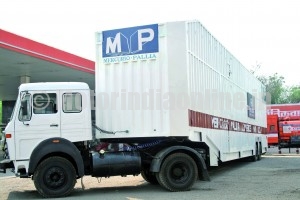
Come what may, the Indian automotive industry is unlikely to slow down in the years to come. Look around and sense the pulse of the young and emerging India with aspiration written in capital letters on their faces. Personal mobility – read passenger cars – is a priority number one spend for every Indian family. Global automotive giants that have entered India – Japanese, South Korean, European and American – over the past decade or even beyond were not wet behind ears to splurge money to pitch tent here. Occasional blips are accounted for and, mind you, they are all long term players. Regular new launches to suit the pockets and tastes of potential Indian buyers signals their constant vigil to make their presence felt and desire to grab bigger and bigger marketshare.
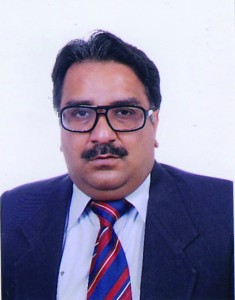
Frost & Sullivan echoes the same sentiments in its latest report: “The Indian automobile industry has shown steady growth over the past few years. With several advantageous developments propelling it further, it has emerged as one of the best-performing sectors in the Indian industry. Currently being in the initial phase of its life cycle slated for rapid growth, the automobile industry is governed by a multitude of factors including macro-economic variables; such as GDP components, industrial production, inflation, interest rates, and stock indices. Sector variables like new model launches, vehicle price and inter-segment competition, and enablers/barriers such as finance availability, road connectivity etc., also affect growth. There is ample growth opportunity especially for two wheelers, as the market penetration for this segment is 55-61 units per 1,000 people, whereas penetration of cars is only 12 per 1,000 people.The PV market is primarily aspiration-driven and launch of new models will spur growth of this segmentfurther. This, combined with a burgeoning client base comprising majorly of a technologically-inclined Gen-Y, offers high scope for high-end PVs. Launch of several technology-loaded models with attractive optionalfeatures will propel growth in this segment in India.”
Mercurio Pallia Logistics’ bossman Vipul Nanda, a born optimist, does not need Frost & Sullivan endorsement of what he already knew, thanks to his exposure to finished vehicle logistics business in the Indian terrain. Though he had begun with passenger cars, he has forayed into two- and three-wheelers as well as heavy commercial vehicles or trucks. “We are always forward looking and do not hesitate to bear risk and be the pioneers,” explains the portly Nanda seated in his Gurgaon corporate office.

Mercurio Pallia Logistics, one of the rarest and perhaps the only Indo-Italian-French-Russian joint venture in the automotive logistics segment with equity participation, is a well-entrenched entity today. Mind you, Nanda’s business partners are not private equity partners who have entered India with an exit date pre-determined but dedicated and hardcore automotive logistics practitioners. It is just not moving finished vehicles across the globe but neck deep in every aspect of inbound, outbound, yard management and transportation and what not.
Mercurio Grupo SPA of Italy would not have been taken over by French giant Gefco (which was fully owned by Peugeot of Finance until recently) two summers ago but for the Italian company’s core competence in the autologistics arena. It was not a strategic investment but an involved core competence expansion and India-entry gambit on the part of Gefco.
What about Gefco’s own strengths? Listen to Philip Shankley, Sales & Marketing Director, based out of Paris: “Producing less expensively, reducing lead times, increasing diversity without reducing quality are key elements. The game is tight in the automotive market. Manufacturers and equipment suppliers have to face constant and frequent challenges.”
He lists out nine challenges:
Inbound Logistics
1. Control your supplies
2. Increase competitiveness of production chain
Outbound Logistics
3. Anticipate distribution needs
4. Guarantee reliable delivery times
5. Customise product offer at the lowest cost
6. Improve the level of service provided to customers
7. Balance logistics costs and the availability of spare parts
Visibility and Monitoring
8. Increase visibility throughout the supply chain
9. Measure to improve logistics performance
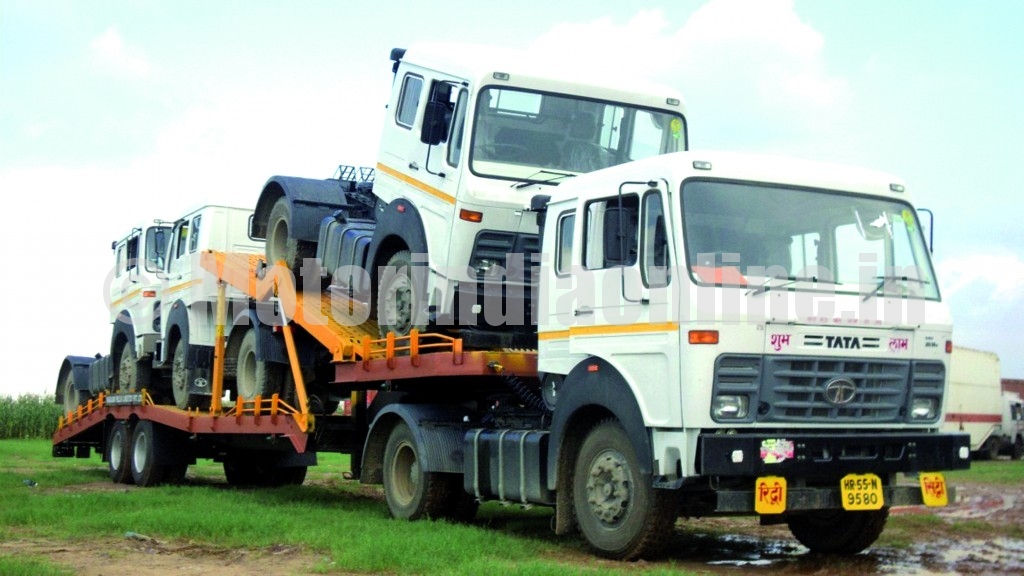
Adds Atul Pareek, In-charge of Planning & Operations: “The continued growth in the automotive industry is obviously going to open up a lot of opportunities for dedicated automotive logistics service providers in the market. This means increased competitiveness requiring all players in the value chain to strive continuously for operational excellence. It has led to an increasing number of movements of new and used vehicles; major change in traffic flows; created more time sensitive and complex supply chain of finished vehicles and resulted in a more important and larger role for specialised finished vehicle logistics providers.”
Mercurio Pallia Logistics keeps expanding its horizons. Besides the engagement with finished vehicle movement, it has also set up a Mercurio Pallia Autoworks at Rewari, Haryana where trucks and trailers are made for captive consumption as well as catering to market needs. “We have not seen a lull period,” points out Anand Khattar, Chief Operating Officer at the autoworks facility. Once again, Nanda has innovatively got into truck-on-truck movement as well long before it became fashionable. With a bit of ingenuity, he and Khattar managed to tweak a few issues and made their car carriers to be used as two-wheeler carrier also. His vehicles today carry passenger cars, trucks, two-and three-wheelers. “The question of empty haul is reduced to the maximum,” adds Chief Operating Officer Sanjiv Tripathi at Mercurio Pallia Logistics.
The latest feather in Mercurio Pallia’s cap is the bagging of Fiat India Automobile’s yard management and transportation business to be managed out of Ranjangaon, near the Italian car giant’s Indian manufacturing plant. “With the GST roll-out round the corner, stock yard management and transportation is going to be the future,” says a confident Nanda. Andrea Guido Conti, founder of Mercurio SPA, whose empire is providing the complete support in designing and implementation, says: “We are the best in this line of business.”

What’s unique about this project, spread over 12 acres of land, hardly two kilometers away Fiat India’s mother plant at Ranjangaon?
• Full-fledged drainage system
• Rain water harvesting
• Total CCTV surveillance
• IT interface with client (Fiat India)
• 100 per cent European training back-up
“Nothing is done half-heartedly at Mercurio Pallia Logistics,” emphasizes Atul and adds that utmost attention is to the minutest details to ensure “ours become a benchmark in stock yard management”.
Given the client’s current requirement, seven acres out of 12 acres is developed to accommodate 1,000 passenger cars through nine loading bays, thus keeping five more acres in reserve for expansion at a future date. This state of the art stock yard can easily accommodate 2,0000 passenger cars at full capacity. Utmost environmental care is taken in the form of rain harvesting (capacity: 60,000 litres), a water-treatment plant to segregate of used water mixed with oilat the workshop inside the stock yard and a green belt on the fringes. An office tower in the middle of the yard for greater visibility admeasuring 1,800 sq.ft. with four security towers 24×7 inside the high security compound are the other hallmarks of this brand new facility.
Mercurio and Gefco are leaders in compound activities in Europe and handle all the biggest compounds in terms of surface such as Markolsheim in France and San Polo in Italy. The group utilizes compounds in all Europe, both West and East, South America and now in Pune. About four millions cars transit through its compounds, mostly PSA but also GM/Opel/Chevrolet, Suzuki, Honda, Fiat, Iveco, Renault, Dacia, Daimler commercial vehicles, BWM and Nissan.
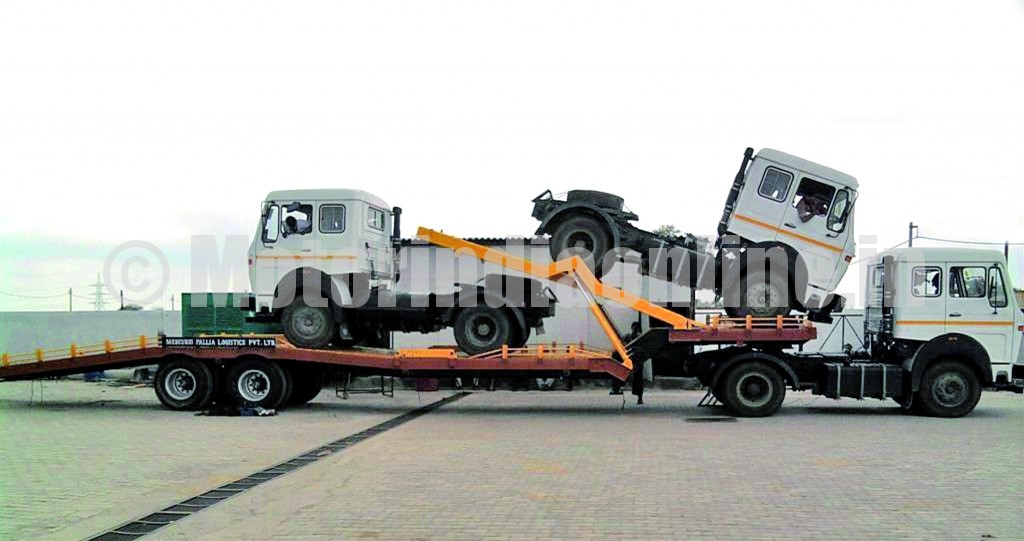
“We have been doing this kind of business for over 50 years and we achieve a high quality system both for stock, PDI, wash and deprotection, body activities, special market activity. Hundreds of employees provide the service in 50 countries. Compounds in the main Mediterranean ports allow us to provide one the most complete logistic service to our clients. Barcelona Foss, Setubal, Livorno, Civitavecchia, Salerno are the best link in the Mediterranean Sea and to North Europe. Thanks to compounds and through them we have a real multimodal service (ship/train/truck),” adds Conti.
“Our goal in India will be to develop the compound facilities in the way to reorganize the flows and logistics systems. Our IT technology allows us to provide the highest quality service on compound. Enormous efforts have been done in quality. We have been awarded by our clients for that,” adds he.
“At Mercurio Pallia, we are always future-ready. We keep exploring and innovating to add value to whatever we do. Stock yard management is just the beginning,” adds a proud Nanda.
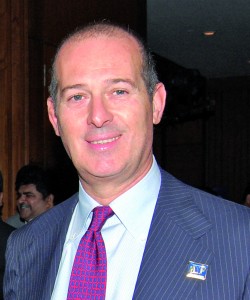
From Lyallpur to Pallia, via Delhi
In Circa 1947, the Nandas of Lyallpur, now called Faislabad, fled to India – leaving everything behind: arable land and transport business to be precise. Delhi was the maiden port of call for the Nanda clan – seven brothers and three sisters. Yashpal Nanda, the eldest, took charge of the family affairs. Given the family’s interest in transport back in the then undivided India where they ran Nanda Bus Service in Lyallpur and around, they decided to explore the same strength in Delhi of 1947.
Yashpal Nanda set up an old car sales depot in Scindia House selling Fiat, Ambassador, Chevrolet etc. while Anand Swarup Nanda began selling items for Indian Railways. Om Prakash Nanda became a bus conductor in Gwalior National Transport Company to keep the body and soul together while the rest of the clan was still very young. After two years, he joined Delhi Transport Company, again as bus conductor. As luck would have it a casual visit to Palia – 93 km away from Shahjahanpur and perched at the Indo-Nepal border town in Uttar Pradesh –changed their fate.
Visiting Pallia, a godforsaken place but awash with sugarcane and oil seed fields in the 1950s convinced the Nandas to explore new business avenues. The Nandas decided to do two things: cart sugarcane to nearby cities and towns on trucks and ferry passengers to surrounding towns, hitherto unheard of in Pallia.
Soon, Goverdhan Lal Nanda was asked to proceed to Pallia. By then he had completed his schooling in Delhi and ready to plunge into family business. With both brothers permanently stationed in Pallia from 1958 onwards, their horizon began to expand. Anything and everything – including mud – was transported by them. Government orders started pouring in. Their tractors also begin to make inroads and were much in demand among Pallia farmers.
By late 1950s, the Nanda brothers started a regular Bus and Truck service: Pallia to Khajuria, a nearby town. Fourteen years after being uprooted from Lyallpur, on October 2, 1961 Pallia Transport Company came into existence with two buses and five trucks. By then, Satish Kumar Nanda was also sent in from Delhi to assist his two elder brothers in managing business.
Like the Partition, the 1962 Chinese war came as a blessing in disguise. Roads came up in double quick time for strategic purposes and in its wake the business of transportation – both goods and passengers – became more enticing.
The Nanda trio evenly distributed their work among themselves: Om Prakash Nanda led the team, as founder of Pallia Transport Company, with a complete focus on business development; Goverdhan Lal Nanda handled administration leaving the financial management to Satish Kumar Nanda. Their business was growing by exponentially: they were into growing oilseeds, sugarcane, grains etc. and managing a fleet ferrying passengers and goods in and around Pallia. Simultaneously, Yashpal Nanda set up Cargo Motors, the topmost Tata dealership firm, and guided the entire clan as a true patriarch of the Nanda clan.
Twenty years after Pallia Transport Company was established, the Nanda clan became large and decided to move out to pursue their own respective agenda. Even the next generation was ready to take charge. In 1981, the Om Prakash Nanda family moved to Lucknow and then to Delhi, and the Satish Kumar Nanda branch shifted to Delhi.
The Goverdhan Lal Nanda branch, however, decided to stick around with Pallia Transport Company brand, though they also migrated to Delhi. He looked after the transport of the entire CKD transportation of Maruti Udyog Limited from Kandla port on the western coast of India to Gurgaon in northern India where it was assembling in the early days.
The advent of ‘people’s car’ viz., Maruti Suzuki in 1980s, coinciding with their arrival in the Indian capital, enabled them to focus on finished vehicle transport business. The growing popularity of Maruti among Indian masses boosted business. Until his father’s demise in 1998, the Nainital-educated Vipul played a second fiddle to him.
At that time, Puneesh Nanda was in charge of the other business started by Goverdhan Lal Nanda. He ran the Karnal car dealership for Daewoo Motors under the banner of Pallia Automobiles, until it was forcibly shut down due to extraneous reasons. Then Puneesh Nanda started a travel and car rental business which he is still carrying on.
With his brother Puneesh Nanda opting out of transport business, Vipul became the real head of Pallia Transport Company. A close knit group of friends – Rajiv Chauhan, Sanjay Bansal, Anand Khattar, Vikash Gupta – also threw their collective weight behind Vipul Nanda in helping him pursue his dreams.
In 2003, Vipul Nanda sensed a fresh business opportunity and decided to throw his weight behind Mahindra & Mahindra, which was making a big foray into passenger vehicle segment beyond the jeeps they were famous for. The gamble paid off handsomely with M&M emerging as one of the top most players in the automotive segment. By a quirk of fate, he and a clutch of his friends with interest in wine, were touring Italy on a wine tasting tour. That is when a casual interaction with Mercurio Grupo of Italy, a renowned European 3PL player in the automotive segment, led to the formation of a joint venture under the banner of Mercurio Pallia Logistics Private Limited. “In a way, the wine search brought the biggest break,” says Nanda.
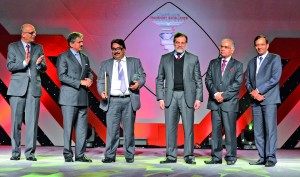
MPL, in the shortest possible time, has grown by leaps and bounds: today, its 600-odd fleet handles finished vehicle logistics of every single automotive OEM in India: Maruti Suzuki, Hyundai Motors, Honda-Siel, Tata Motors, Mahindra & Mahindra, General Motors, Nissan, Toyota, Fiat etc. In another interesting development, in 2011, MPL was pleasantly surprised to the induction of Gefco, the fully owned subsidiary of Peugeot of France and specialized in both inbound and outbound logistics in automotive segment, becoming a joint venture partner in the Indian company. This transpired with Gefco buying Mercurio across the globe. Subsequently in 2012, RZD (Russian Railways company) bought a majority stake in Gefco, thus turning Mercurio Pallia Logistics into a unique logistics and supply chain company focused on automotive arena with an end-to-end solution provider.
Challenges & Solutions
CHALLENGES
Variety of Loads: There are different models of trucks/trailers which can be defined by virtue of their capacities but there are presently hardly any truck carriers to carry heavy commercial vehicles. The major challenges for optimal utilization of available road capacity are the trailer design, vehicle dimension issue and motor vehicle act issues.
Poor Infrastructure: Finished vehicle logistics efficiency is affected mainly because of poor infrastructure, bad roads, toll and tax windows on the highways, lack of trained manpower, driver fatigue resulting in delayed deliveries.
Rotation of the fleet: Fleet rotation is another challenge. Idle timing; waiting outside auto OEMs for load, seasonal problems during rainy season, uneven demand during festival seasons and the like cause waste of time and resourses.
Availability of Quality Drivers: Quality manpower – particularly drivers are a biggest issue. As on date, the industry does not have sufficient drivers and the future looks even bleaker. There are very few driver training facilities in the country. Mercurio Pallia & Gefco plan to invest in human capital to implement global best practices on fleet management to cut costs and improve quality.
SOLUTIONS
Hard Solutions
Truck solutions: One of Mercurio Pallia’s newest introductions to the industry is the trucks-on-truck concept. Mercurio’s engineers from Italy have been collaborating with Pallia on trailer design at Mercurio Pallia’s 5.5 acre trailer manufacturing facility at Rewari. Mercurio Pallia have developed a product that conforms to CMVR in overall lengths, with a loading capacity of three tractors or two bus chassis or three LCV’s. Being equipped with built-in loading ramps, the effort on the part of the driver is minimal and the loading time is significantly lower.
For this purpose, the JV firm which started commercial vehicle transportation only in 2009, has delivered 15 Tata 3518 ‘truck-on-truck’ concept trucks for trail transport of Tata Prima trucks from Tata Motors’ Jamshedpur plant to its other plants in Pune and Lucknow. Going forward, the Prima trucks could themselves become the platform for the trailers- especially once Peugeot’s plant begins to scale up. Also, as a proactive measure, Mercurio Pallia will put out 18.75 meter trailers (with a maximum height of 4.75 meters) as against the average industry norm of 22 meters. The auto logistics industry anticipates norms regulating trailer dimension coming into effect in the near future, hence Mercurio Pallia is proactive when it comes to development of trailers. Even though 22 meter trailers can carry more cars, relative to 18.75 meter trailers, the price to be paid in terms of safety and road damage is simply not justified.
The other innovation being planned is in the domain of two-wheeler transportation, trials for which are already underway with Hero Motor Corp and Mahindra two wheelers. Mercurio Pallia has designed a triple-decker versatile car-cum-scooter carrier that can carry 106 two-wheelers and for return load it can carry eight cars to minimize empty return as opposed to a conventional scooter carrier.
Multiuser and Multimodal Solutions
A vital step in India’s further development is expanding the road and rail network, and modernizing harbours and airports. In the process of globalization, which is expanding India’s position in world trade, transport volume has climbed rapidly in recent years. The expansion of the logistics infrastructure has been unable to keep up with this pace. The proportion of automotive freight moved by rail is woefully inadequate. There is an established need for Intermodal Auto Parks in each of the auto clusters. These hubs should comprise complete intermodal terminal for providing total multimodal supply chain solutions for automobile handling with adequate space for parking, loading/unloading and PDI of cars.
As far as long distance transportation is concerned the future concept would be to move from trucks to rail through compound.
Soft Solutions
• Manpower training
• IT
• Fleet management
• Compound management: a better rotation
• Data management: volume and flow forecasting and planning
IT Solutions
Information is everything once the vehicles leave the gates of auto OEMs. Mercurio Pallia Soft solutions will amplify the IT usage for better results and as everybody knows ,GPS is a necessity for all logistics service provider today. But important is how to use the data for increasing efficiency. Mercurio Pallia have already started extensive training programs for tracking department to get the maximum usage of the data available. The project involved:
• Setting up of a dedicated web portal
• Real time follow up to trace and track
• Increasing visibility at any step
• Attending tp on time delivery requests
• Historical data for all shipments for 90 days after their delivery